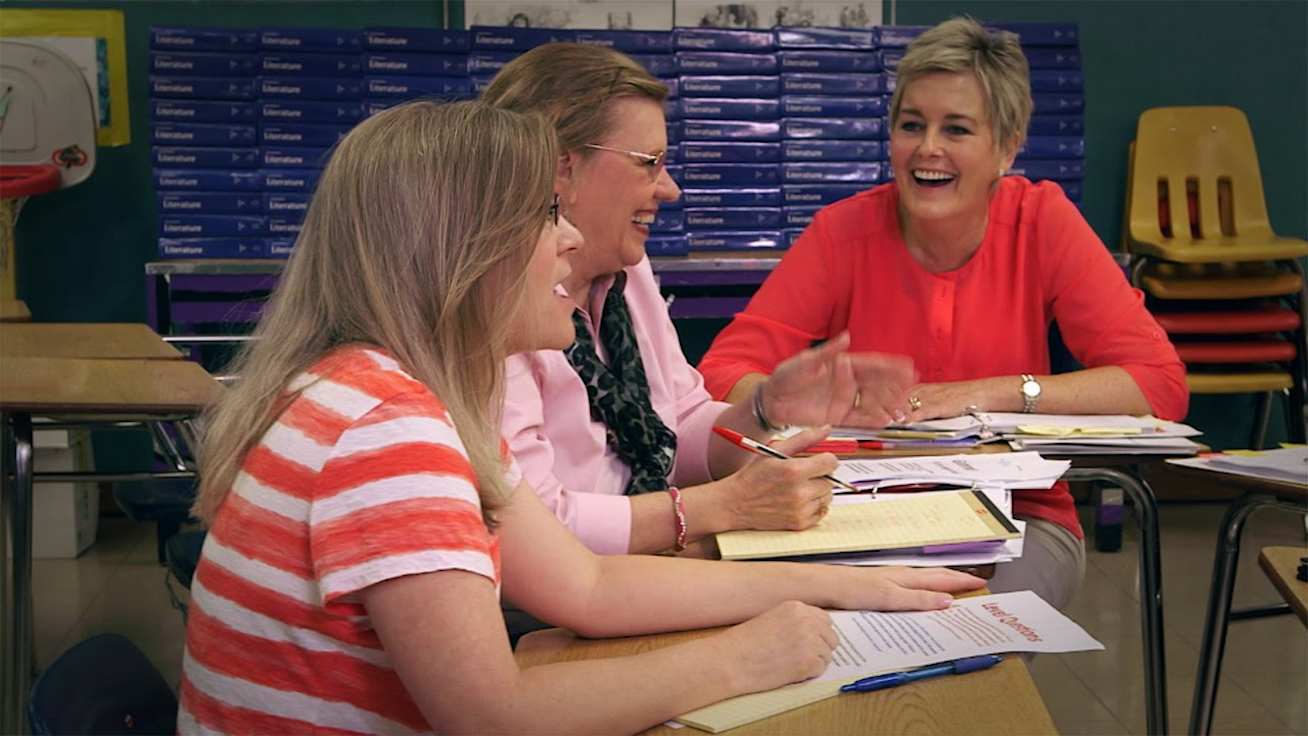Lessons from School
How teachers learn
What nine educators told Melinda about improving their practice.

For most families, “back to school” is an opportunity to get up to speed on youth fashion trends while shopping for first-day outfits. For 4 million teachers, however, it’s time to start changing students’ lives again.
I recently spent a day at a conference in Nashville where thousands of teachers from across the country were gathered to do just that—talk about their craft, share ideas, and learn new skills so they could be better this year than they were last year. I love spending time with teachers. Over the years, Bill and I have met with teachers from Los Angeles to New York to Chicago to Houston, and many points in between. In Nashville, I met with a group of nine teachers, because I wanted to hear what they struggle with the most and what they’re most excited about.
Their struggles and their excitement hinge on pretty much the same thing. They want to do their best work. They want the ability to keep getting better. They want to know that they are helping their students succeed every single day. The things that get in the way of that—one-size-fits-all professional development, their impossibly busy schedules, their isolation from each other inside their classrooms—drive them crazy. But the things that facilitate continuous improvement get them excited in ways that blow my mind.
One of the things they were most passionate about is something called the Literacy Design Collaborative. The Collaborative helps teachers get the skills to encourage their students to think actively rather than just receive information. Take the example of the presidents of the United States. As a student, you can either memorize that Andrew Jackson was the seventh president and the first Democrat, or you can ask yourself how the United States changed when citizens no longer had to meet property qualifications to vote. Teachers want to do the latter, and they’re starving for tools that will help them create that kind of intellectual environment in the classroom.
In Nashville, the teachers made it clear that one of the tools they need most is high-quality lesson plans. Moving students from rote memorization to in-depth analysis takes careful planning. Imagine trying to describe the relationship between trigonometric concepts and the reason the acoustics in Carnegie Hall are so rich. It’s not easy. You need a good plan, and teachers tell me one of the reasons they need to collaborate is to share lesson plans. That’s why I’ve asked teachers to submit their favorite lessons, which you can find below.
The Literacy Design Collaborative and sharing lesson plans are just two of the new ways teachers are collaborating with each other, no matter where they live. This kind of coast-to-coast collaboration is made possible by the Common Core State Standards, which are consistent everywhere. Hearing teachers talk about how these tools help them in the classroom is why I’m so excited about the promise of the standards.
At the Gates Foundation, we have a quotation from Socrates on the wall. “Education is the kindling of a flame, not the filling of a vessel.” These teachers I talked to are educators. They have no interest in filling their students up with facts they don’t know how to apply in the world. They were called to their profession because they want to set their students’ imaginations on fire.
Our job is to give them the help they deserve so they can give our students the help they need.



